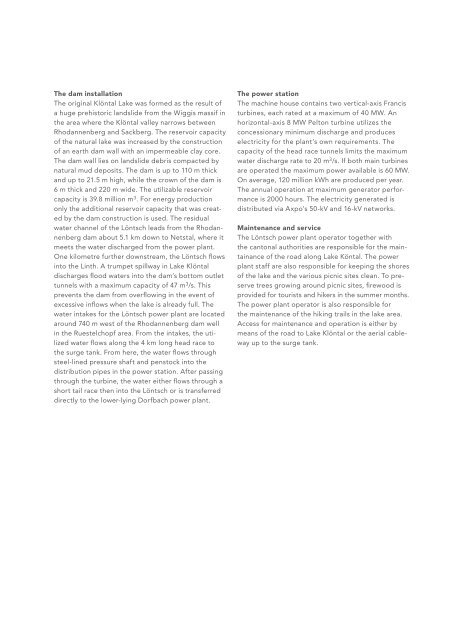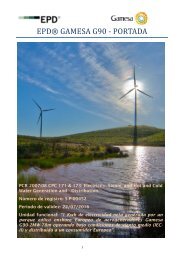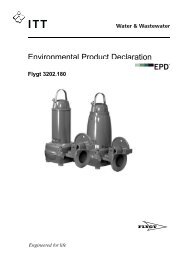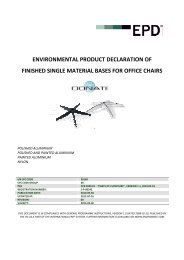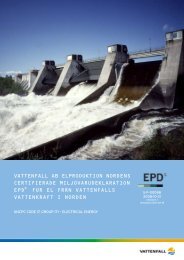EPD - Axpo
EPD - Axpo
EPD - Axpo
- No tags were found...
You also want an ePaper? Increase the reach of your titles
YUMPU automatically turns print PDFs into web optimized ePapers that Google loves.
The dam installationThe original Klöntal Lake was formed as the result ofa huge prehistoric landslide from the Wiggis massif inthe area where the Klöntal valley narrows betweenRhodannenberg and Sackberg. The reservoir capacityof the natural lake was increased by the constructionof an earth dam wall with an impermeable clay core.The dam wall lies on landslide debris compacted bynatural mud deposits. The dam is up to 110 m thickand up to 21.5 m high, while the crown of the dam is6 m thick and 220 m wide. The utilizable reservoircapacity is 39.8 million m 3 . For energy productiononly the additional reservoir capacity that was createdby the dam construction is used. The residualwater channel of the Löntsch leads from the Rhodannenbergdam about 5.1 km down to Netstal, where itmeets the water discharged from the power plant.One kilometre further downstream, the Löntsch flowsinto the Linth. A trumpet spillway in Lake Klöntaldischarges flood waters into the dam’s bottom outlettunnels with a maximum capacity of 47 m 3 /s. Thisprevents the dam from overflowing in the event ofexcessive inflows when the lake is already full. Thewater intakes for the Löntsch power plant are locatedaround 740 m west of the Rhodannenberg dam wellin the Ruestelchopf area. From the intakes, the utilizedwater flows along the 4 km long head race tothe surge tank. From here, the water flows throughsteel-lined pressure shaft and penstock into thedistribution pipes in the power station. After passingthrough the turbine, the water either flows through ashort tail race then into the Löntsch or is transferreddirectly to the lower-lying Dorfbach power plant.The power stationThe machine house contains two vertical-axis Francisturbines, each rated at a maximum of 40 MW. Anhorizontal-axis 8 MW Pelton turbine utilizes theconcessionary minimum discharge and produceselectricity for the plant’s own requirements. Thecapacity of the head race tunnels limits the maximumwater discharge rate to 20 m 3 /s. If both main turbinesare operated the maximum power available is 60 MW.On average, 120 million kWh are produced per year.The annual operation at maximum generator performanceis 2000 hours. The electricity generated isdistributed via <strong>Axpo</strong>’s 50-kV and 16-kV networks.Maintenance and serviceThe Löntsch power plant operator together withthe cantonal authorities are responsible for the maintainanceof the road along Lake Köntal. The powerplant staff are also responsible for keeping the shoresof the lake and the various picnic sites clean. To preservetrees growing around picnic sites, firewood isprovided for tourists and hikers in the summer months.The power plant operator is also responsible forthe maintenance of the hiking trails in the lake area.Access for maintenance and operation is either bymeans of the road to Lake Klöntal or the aerial cablewayup to the surge tank.


